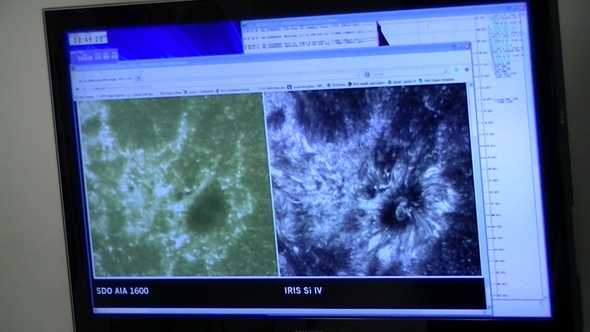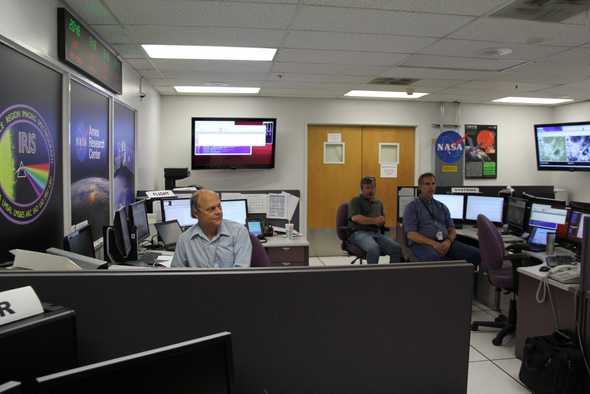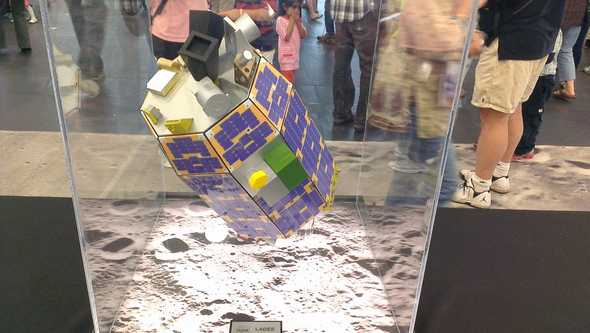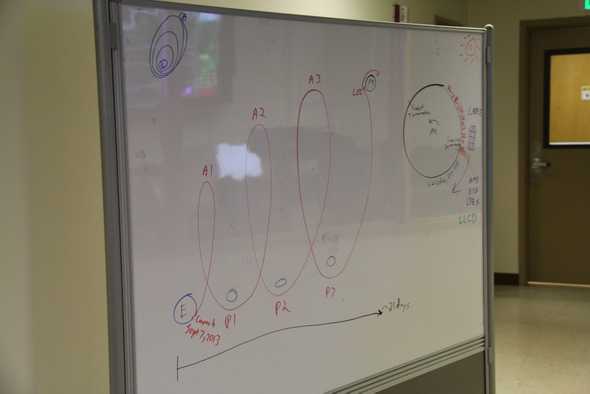Inside IRIS and LADEE Mission Operations Center
IRIS is a solar observing satellite in polar orbit around the Earth. Because it is in polar orbit, the satellite can always see the sun. The goal of the mission is to study the sun and the energy transfer from the chromosphere to the corona of the sun by looking at the ultraviolet frequencies.
The image on the right is one of the first images captured by IRIS. The one on the left comes from the SDO. SDO is an existing satellite that has been looking at the whole sun. IRIS will focus on specific areas and find more detail.
A month after launch, the team was still completing checkout operations for the IRIS spacecraft. They were working things out with the calibration with the attitude control system.
The mission is expected to last for 60 days. Mission operations talks with the spacecraft six times a day. It is in a polar orbit which means it circles the earth by passing over the north and south poles. It uses the Near Earth Network that consists of ground-based satellite dishes in Svalbard, Norway; Fairbanks, Alaska; Wallops Island, Virginia; and McMurdo, Antarctica.
The IRIS mission operations center is located one floor above where the LADEE spacecraft was built.
LADEE will be using some of the same networks, but will also include the Deep Space Network (DSN). The DSN consists of ground stations in Madrid, Spain, Canberra, Australia, and Goldstone, California.
There are four payloads on the LADEE spacecraft. Three of them are science instruments and one is the Laser Communications. The Lunar Laser Communication Demonstration is a two way laser on the spacecraft. There are three ground terminals on Earth. They will test a new way of communicating over laser instead of RF. They hope to get 10 mb/s communication rates. The existing RF system has a rate of about 1 mb/s. That will allow more science data to be transmitted back to Earth.
LADEE will launch on a Minotaur V rocket, scheduled for September 5th. It won’t be able to get to the moon directly. It will orbit the Earth and after the third perigee, it will intersect with the moon. When the spacecraft gets to each of the three perigee points, they will fire the thrusters to increase the speed.
When the spacecraft intersects with the moon, they will fire the thrusters again to slow down and will put the spacecraft in the orbit around the moon. After another three elliptical orbits around the moon, which takes about a month, the spacecraft will be in an orbit 50km above the surface, ready to perform the science phase of the mission. The science phase of the mission will last about 100 days.
During the perigee points, the spacecraft will be moving too fast for the DSN to track it. They will use the TDRS network, which was used by the space shuttle. The TDRS network will monitor the spacecraft for about a half hour and then switch back to the DSN. The operations team will practice the sequence with the ground stations in the weeks before launch.
The spacecraft will travel around the moon in what is called a retrograde orbit, opposite the way the moon is rotating. It will orbit the moon about once an hour. It will pass through a spot called the sunrise terminator where the sun and the dark side meet. They will use the neutron-mass spectrometer to see what’s in the particles, the ultraviolet spectrometer to see through the particles, and the lunar dust experiment to count how many particles it is passing through.





